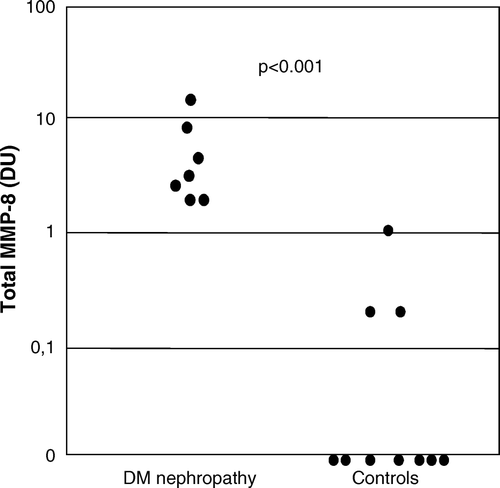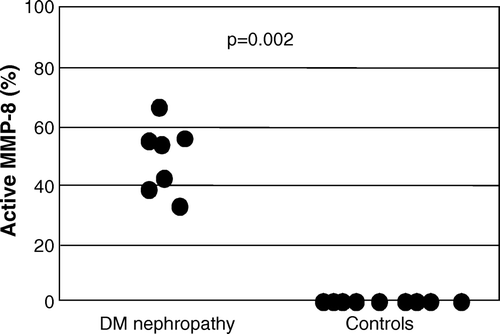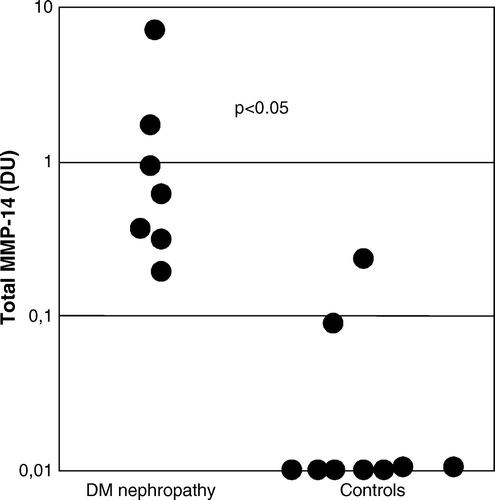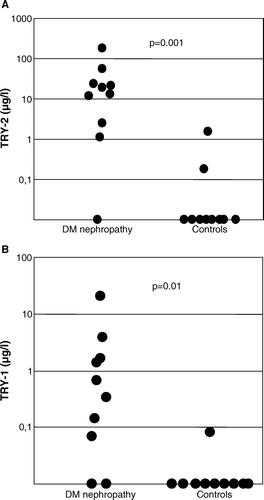Figures & data
Table I. Clinical characteristics of the diabetic nephropathy patients.
Figure 1. Determination of total MMP-8 immunoreactivity by Western blotting in urine. The concentrations (expressed as densitometric units (DU)) were significantly higher (P < 0.001) in patients with diabetic nephropathy (DNP) than in healthy controls.

Figure 2. The proportion of active polymorphonuclear neutrophil (PMN) type MMP-8 determined by Western blotting in urine was significantly higher (P = 0.002) in diabetic nephropathy (DNP) patients than in healthy controls.

Figure 3. Western blotting of collagenase-2 (MMP-8) (panel A), zymography and Western blot of gelatinase (MMP- 2 and -9) (panel B) and membrane-type I matrix metalloproteinase (MMP-14, panel C) in urine from DNP patients (lanes 1–3, DNP) and healthy controls (lanes 4–6, cont). Also in DNP, but not in urine of healthy control, high molecular weight (>80 kDa) MMP-8 and (>92 kDa) MMP-9 complexes could be detected. Human PMN- and rheumatoid synovial fibroblast-culture media were used as positive control for PMN- and mesenchymal (Mes)-type MMP-8 isoforms and for MMP-9 and -2. Also pure human MMP-2, -9, and -14 were used as positive controls. Mobilities of the molecular weight markers are indicated on the left.

Figure 4. Total immunoreactivity of urinary MMP-14 (MT1-MMP) determined by Western blotting. The concentrations in diabetic nephropathy (DNP) patients were significantly higher (P < 0.05) than in healthy controls.

Figure 5. Concentrations of TRY-2 and TRY-1 in urine. In diabetic nephropathy (DNP) patients the concentrations of TRY-2 (panel A) and TRY-1 (panel B) were significantly higher than in healthy controls (P < 0.001 and P<0.01, respectively).

Table II. Gelatinolytic activity, percent active MMP-9 and TATI in urine of patients with diabetic nephropathy, and of healthy controls. Data are presented as median (25%–75% percentiles).
Table III. Correlations between active urinary MMP forms and TRY-2, TRY-1 and TATI in urine of DNP patients (n = 10).